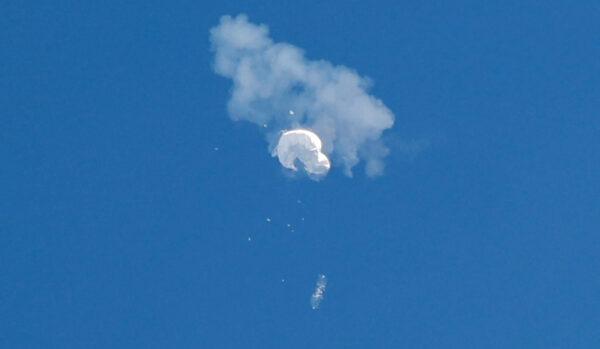The U.S. Northern Command said Friday it recommended to conclude searches for two unidentified objects that were shot down in U.S. airspace earlier this month.
One of the unidentified objects was shot down on Feb. 10 over U.S. waters off the northern coast of Alaska, near Deadhouse. Another was shot down on Feb. 12 over Michigan’s Lake Huron.
Search operations for the two objects have “discovered no debris,” according to the command. The searches were conducted by the U.S. military, federal agencies, and Canadian partners. They used “a variety of capabilities, including airborne imagery and sensors, surface sensors and inspections, and subsurface scans,” the command stated.
“Artic conditions and sea ice instability informed decisions to conclude search operations” in Deadhorse, the statement reads.
Meanwhile, according to the statement, multiple days of searches and subsurface scans failed to find any debris from the flying object that was shot down on Lake Huron.
Remaining Debris of Chinese Spy Balloon Sent to FBI
The U.S. Northern Command and RCMP also issued updates on developments regarding the other two flying objects.Debris from the Chinese spy balloon that was shot down on Feb. 4 has been successfully recovered, the U.S. Northern Command said Friday. It added that final pieces of debris “are being transferred to the Federal Bureau of Investigation Laboratory in Virginia for counterintelligence exploitation.”

The command added that airspace and maritime restrictions around all three recovery operations in U.S. airspace have been lifted.
Meanwhile, Canada’s RCMP announced that with regard to the cylindrical object shot over Yukon Territory in Canadian airspace on Feb. 11, “[s]earch and recovery efforts continue ... with the assistance of the Canadian Armed Forces.”
“The conditions are extremely challenging with a very large search area, spanning 3,000 square kilometers, and consisting of rugged and mountainous terrain with a high level of snowpack and harsh winter conditions,” the RCMP said of the search.
“This investigation is in its very early stages and will take time. We will share additional information when it becomes available as the recovery efforts and investigation unfold.”
He added, “The intelligence community’s current assessment is that these three objects were most likely balloons tied to private companies, recreation, or research institutions studying weather or conducting other scientific research.”
Biden also said that authorities “don’t have any evidence that there has been a sudden increase in the number of objects in the sky.”
“We’re now just seeing more of them, partially because the steps we’ve taken to increase our radars—to narrow our radars. And we have to keep adapting our approach to dealing with these challenges.”




